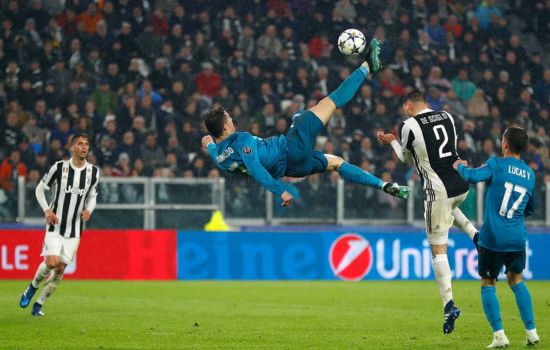6. Roberto Carlos vs. France – 1997
During the Tournament of France, Roberto Carlos He took a free kick that drastically deviated in trajectory, stunning the goalkeeper and the world. The curve was so unusual that it was studied in physics schools.
Highlights:
- Unmatched power and effect.
- Execution from a long distance.
- A goal of science and art.
A work that broke the mold and redefined free throws.
7. Marco van Basten vs. USSR – Euro 1988
In the final of the continental tournament, Van Basten He received a long cross from the left and, without letting the ball touch the ground, struck it with a spectacular volley.
Reasons to highlight it:
- Goal in a Euro Cup final.
- Closed angle.
- Execution of pure technique.
A showcase of Dutch virtuosity at its finest.
8. George Weah vs. Verona – Serie A 1996
George Weah, the only African to win the Ballon d'Or, left his mark with an extraordinary goal: he took the ball in his own area, ran the length of the field and finished with precision.
What makes it unique:
- Complete tour of the field.
- Combination of speed, strength and technique.
- A goal that sums up the competitive spirit.
A jewel of power and physical endurance.
9. Dennis Bergkamp vs. Argentina – 1998 World Cup
In the quarterfinals of the World Cup, Dennis Bergkamp He controlled a long pass with sublime finesse, dribbled past the defender and scored a goal that redefined football elegance.
Highlights:
- Impeccable oriented control.
- Coldness at the key moment.
- Decisive goal in a World Cup.
A poem of precision and subtlety.
10. Carlos Alberto vs. Italy – 1970 World Cup
Brazil closed the World Cup final with an impeccable collective play. The ball passed through several players before Carlos Alberto Torres He finished with power after an assist from Pelé.
Why it's historic:
- Perfect team goal.
- World Cup final.
- Example of total football.
The icing on the cake for one of the most talented national teams of all time.
What Makes a Goal Beautiful?
A beautiful goal isn't defined solely by its difficulty. There are deeper, more subjective factors that influence how a goal is perceived by fans:
Determining factors:
- Individual technique: control, finishing, precision.
- Innovation: plays that surprise.
- Context: goals in key matches.
- Visual impact: fluidity and aesthetics.
When these elements converge, a goal is created that excites even neutrals.
The Goal as a Cultural Manifestation
Beautiful goals are more than just sporting achievements; they are part of football's cultural heritage. They become a reference point for eras, styles, and generations. Some are revived in documentaries, museums, video games, and commemorative jerseys.
- The goal of Maradona represents Argentine passion.
- The one of Ronaldinho personifies Brazilian joy.
- The one of James is a symbol of hope for Colombia.
- The one of Bergkamp reflects European coldness and elegance.
These are stories that are passed down from parents to children, from coaches to players, from generation to generation.
Conclusion: When the Goal Is More Than a Number
In a sport where thousands of goals are scored each year, only a few manage to capture the hearts of the fans. These are the goals that transcend the result, that thrill even if you're not a fan of the team. They're shared, repeated, and admired.
The 10 goals we saw here are a tribute to the beauty within the game. They remind us that football, besides being a passion, can be an art. That a perfect move, at the right moment, can become history.
And as long as there are players willing to create, surprise, and dream, there will always be new goals that will leave us breathless.

